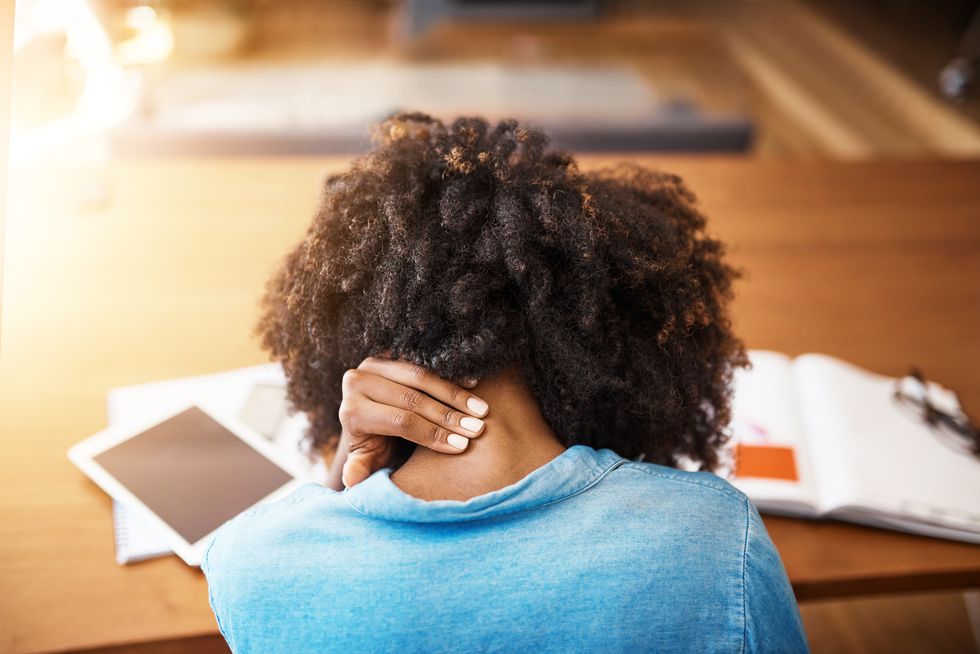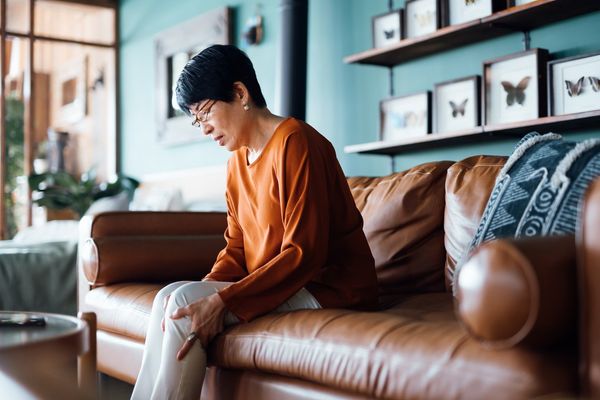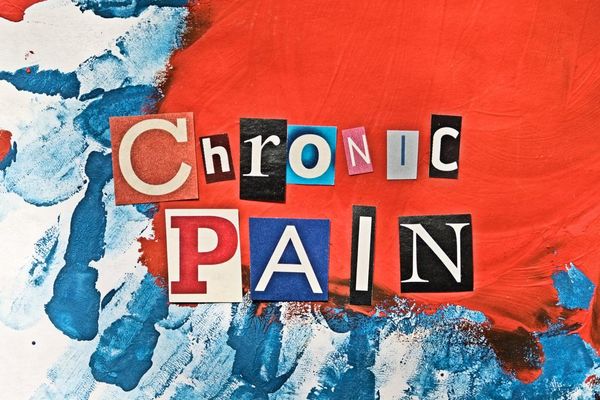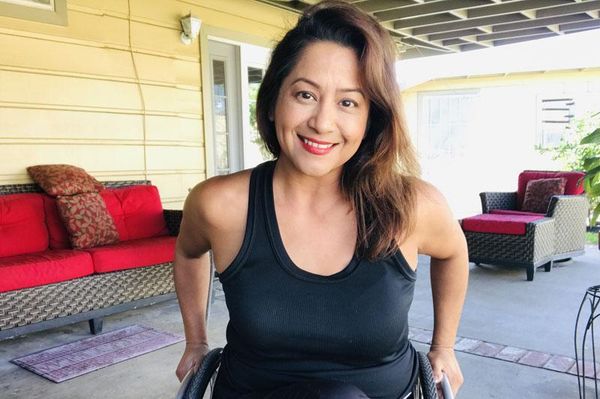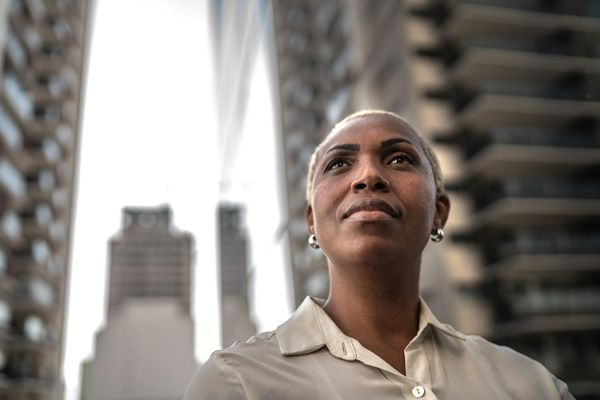HealthyWomen’s Dr. Monica Mallampalli shares some unsettling data about chronic pain—across sex, gender and race—and offers measures for moving women's health care forward. In the year 2020, these barriers must come down.
Monica Mallampalli, PhD, MSc, scientific advisor for scientific and strategic initiatives at HealthyWomen has issued a call-to-action for improving access to care for all women with chronic pain conditions—an especially crucial issue during COVID-19 and as part of the country's impassioned conversation on race and privilege.
"Indeed," she wrote, "even getting health care providers to acknowledge the reality of women's pain is a struggle—in the best of times."
HealthyWomen is a nonprofit organization aimed at raising awareness and advocacy around issues important to women's health. Its 2019 report, Chronic Pain in Women—Focus on Treatment, Management and Barriers, was based on a survey of 1,004 respondents. Now, a year later, the organization is justifying its call to action with updated data and specific recommendations on how to get the job done.
The Stats Are Unsettling
Below are a few highlights from Dr. Mallampalli's call to action.1
Women live with more pain than men:
- One in three women in the U.S. live with chronic pain.
- Women are far more likely than men to suffer from a chronic pain condition, including fibromyalgia, migraine, chronic fatigue syndrome, osteoarthritis and rheumatoid arthritis.
- Several chronic pain conditions occur only in women, such as endometriosis and vulvodynia. (More on pelvic pain and sexual pain.)
Women's pain is more complex:
- Women often live with more than one chronic pain condition, known as comorbidities, which can make finding a diagnosis and proper treatment regimen complicated.
- Women with pain tend to have high rates of current or past trauma (for example, physical or sexual abuse). If they develop post-traumatic stress disorder, they may experience higher levels of pain and emotional distress as well as less function.
- It often takes years for women with chronic pain conditions to get the right diagnosis, let alone find or access the right treatment (more on the U.S. pain specialist shortage below). For those with endometriosis, for instance, women see an average of five doctors before getting the right diagnosis.
- Women are more likely to use opioids at higher doses and for longer periods. At the same time, some data show that it takes women less time to become dependent on opioids, making them more susceptible to opioid use disorder (also known as opioid addiction).
- While not part of the HealthyWomen report, it's important to note that hormones can be related to pain experience in women as well.
Women are treated differently despite their pain:
- When women go to a health care provider's office with pain, they are more likely to be offered psychotherapy, while men are more likely to be offered pain-relieving medications. (Note that optimal pain management includes a range of treatment approaches; see more on this biopsychosocial model below.)
- Research continues to demonstrate sex-based differences in pain perception and treatments. In other words, women may be treated differently than men in the clinical setting when they say they have pain, with women's pain sometimes considered to be more psychogenic or emotional. Historically, these factors go back to women not being included in early clinical trials for drugs and other studies.2
In her action plan, Dr. Mallampalli says that last point is still not sinking in for many providers.
Our Country's Crises Are Making Matters Worse
Not only has the coronavirus pandemic placed women who live with pain under more stress and caused heightened anxiety and depression, but, according to HealthyWomen's findings, the overall pain care environment is even worse for minority women.
The spread of COVID-19 has limited health care visits and led to many interventional pain-relieving procedures (for example, nerve blocks and injections) being deemed "non-essential." As a result, women living with pain are missing out on crucial support systems at exactly the time when their pain may be flaring more than usual.
Even more critical for women living with chronic pain conditions is the unequal health care often delivered to minority women. Given the growing conversation in the country around racism and privilege, Practical Pain Management (PPM) asked Dr. Mallampalli to expand on the discrimination that many minority women face when trying to access health care, whether it be getting an appointment, filling a prescription or being treated differently in the clinical setting.
"It is well documented that unconscious or implicit bias currently exists in our health care system," she says, noting that these biases can be related to gender, age, race and socioeconomic status. "All these can interfere with access to appropriate and good-quality care for women but especially for minority women."
In particular, Dr. Mallampalli noted that minority women deal with "not only gender bias but also racial bias when it comes having their pain assessed and treated compared to men. There have been many documented examples of barriers that prevent minority women from accessing care." She shared the following examples:
- Physical barriers: An interesting study out of the University of Michigan looked at pharmacies stocking opioids based on zip codes. This study showed that pharmacies in white neighborhoods, even when low-income, carried adequate supplies of opioids compared to minority high-income neighborhoods where the supply was sufficient only half the time. Even when a woman might have a prescription for an opioid, the pharmacy may choose not to carry the prescription leading to an intuitional barrier.4
- Physician attitudes: Racial and ethnic stereotyping by physicians can affect the way pain is assessed and managed. Pain assessment is subjective, and the way it's assessed can interfere with how it is treated. In general, physicians have been known to discount pain in women, and this presumption is worse in minority women who report high levels of pain. As a result, they are often undertreated due to preconceived notions about their race and ethnicity. For example, doctors may undertreat minorities by not prescribing opioids because they see the patient's pain as a drug-seeking behavior. They may also express inappropriate concern about related addiction. This type of unconscious bias can erode interaction or communication between patients and providers.
- Patient factors: Patients' perceptions of pain can differ among racial and ethnic populations. Other factors that act as barriers and interfere with better treatment outcomes can include socioeconomic status, pain reporting, pain behavior and mistrust of medicine.5
Unlike the pandemic, which so many hope and assume will be temporary, these bias-based barriers and factors can affect a woman's pain care throughout her lifetime, ultimately impacting her family, her workplace and society at large.
Where Are the Pain Specialists and the Payors?
Another weakness in pain management is the lack of pain specialists. Data show that there are just over 5,000 licensed pain management specialists practicing in the U.S. today, which equates to one specialist for every 61,000 people.3,4 The Centers for Disease Control and Prevention reports that 50 million people live with chronic pain.
With no official residencies for pain management, physicians and other types of health care providers must rely on fellowships to obtain board-certification in pain medicine/pain management; non-physicians such as nurses and physical therapists rely on continuing education to work in pain management settings. This means that primary care doctors, often a person's first or only point of care, do not always have a full understanding of complex pain or how to treat it. (More on this issue on our clinical site.)
Alternative and complementary therapies, such as acupuncture or manipulation, which support today's biopsychosocial approach to pain care are often not covered by insurance. (The biopsychosocial model takes into account not just the physical aspect but also psychological and social factors that affect living with pain and how to approach treatment.) This lack of coverage often extends to treatment for those facing opioid use disorder.
And then there are women who are also caregivers, moms or may be pregnant. Writes Dr. Mallampalli, "Few inpatient facilities are set up for pregnant women and, as caregivers, women resist or are unable to leave their children to seek help…. and pregnant women are afraid of having their babies taken away after birth if they admit to or test positive for opioids or other drugs."
In so many ways, women living with pain are just hitting wall after wall, all while trying to care for their families, to maintain their jobs and to simply get through the day.
As Dr. Mallampalli declared in her call to action: "Women with chronic pain deserve better."
"It's time to remove barriers that prevent access to effective, affordable, timely and appropriate care," she wrote. "It's time for a national initiative focused on addressing the obstacles that prevent women with chronic pain getting quality health care."
Where Do Women in Pain Go From Here?
As part of its 2019 Chronic Pain in Women summit, HealthyWomen issued recommendations for improving education about pain in women, reducing stigma and sex and gender differences in pain research, recognizing the psychosocial aspect of pain in women and more. Read the full list.5
This year, Dr. Mallampalli is calling on policymakers, clinicians and patient advocates to join in supporting these recommendations. She also shared with PPM how you can make a difference.
- Aim to understand the barriers that exist and leverage opportunities to get good care.
- Empower yourself with education to ask questions, improve communication with your health care professionals and be your own advocate.
- Tell your health care professionals about your pain and the challenges you face. When you go to a medical appointment, carry detailed notes about your medications and treatments, as well as your questions and concerns, to ensure you get the care you need.
- Stigma is a major problem in pain care. Share your personal pain journey with others to help overcome stigma. You are likely to find that there are many voices similar to yours and many similar journeys.
- Build a network with other women and advocate on their behalf when they are unable to do so.
Sources
- HealthyWomen. Chronic Pain in Women—Focus on Treatment, Management and Barriers. 2019. Available at: www.healthywomen.org/sites/default/files/files/chronic_pain_summit_report_final.pdf Association of American Medical Colleges. Physician specialty report: number of people per active physician by specialty, 2017.www.aamc.org/data-reports/workforce/interactive-data/number-people-active-physician-specialty-2017. Accessed March 28, 2020.
- Doshi TL. The many gender gaps in pain medicine. Pract Pain Manage. 2018;18(5). www.practicalpainmanagement.com/resources/clinical-practice-guidelines/many-gender-gaps-pain-medicine,
- Jamison RN, Scanlan E, Matthews ML, Jurcik DC, Ross EL. Attitudes of primary care practitioners in managing chronic pain patients prescribed opioids for pain: a prospective longitudinal controlled trial. Pain Med. 2016;17(1):99-113.
- Green CR, Khady Ndao-Brumblay S, et al. Differences in Prescription Opioid Analgesic Availability: Comparing Minority and White Pharmacies Across Michigan. J Pain. 2004;6(10):689-699.
- Tait RC, Chibnall JT. Racial/ethnic Disparities in the Assessment and Treatment of Pain: Psychosocial Perspectives. Am Psychol. 2014;69(2):131-141.
This piece was originally published in Practical Pain Management, and is republished here with permission.
- For Millions of Americans Enduring Chronic Pain, Support Is Overdue - HealthyWomen ›
- The Pain Gap: Why Women’s Pain Is Undertreated - HealthyWomen ›
- The Pain Gap: Why Women’s Pain Is Undertreated - HealthyWomen ›
- Learn More About Chronic Pain - HealthyWomen ›
- How to Talk to Your Doctor About Opioid Abuse - HealthyWomen ›
- Chronic Pain Management for Women - HealthyWomen ›
- Women Need a Personalized Approach to Pain Management - HealthyWomen ›
- Create a Pain Management Treatment Plan Before Surgery - HealthyWomen ›
- Women Are More Likely to Have Chronic Pain - HealthyWomen ›

